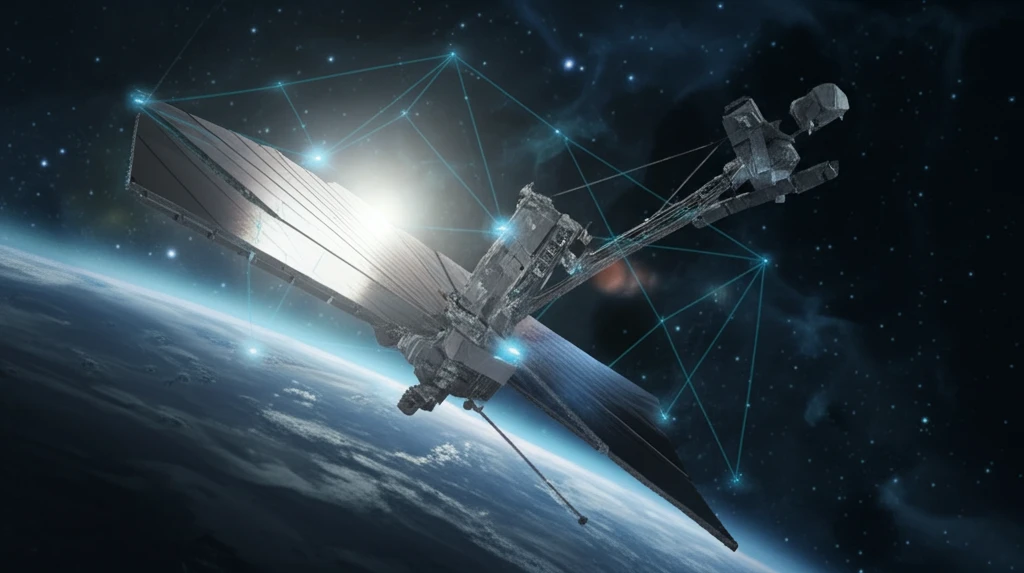
Space Tech Revolution: How Genetic Algorithms Could Keep Future Solar Power Satellites Healthy
"Deployable antenna health monitoring in space is getting a smart upgrade."
Imagine a future where clean, limitless energy beams down from space. Space-based solar power satellites (SSPS) are a promising concept. The idea is to collect solar energy in space and wirelessly transmit it to Earth. However, the harsh reality of space means these satellites face potential damage over their long lifespans. This is where a clever solution comes in: using genetic algorithms to optimize sensor placement for health monitoring.
Think of structural health monitoring (SHM) as a satellite's regular check-up. By strategically placing sensors, engineers can detect early signs of damage or degradation. The challenge lies in determining the best locations for these sensors, especially on complex, deployable antenna modules. Traditional methods often fall short, which leads researchers to explore the use of genetic algorithms for optimal sensor placement (OSP).
Genetic algorithms, inspired by natural selection, offer a powerful way to tackle this optimization problem. They can efficiently explore a vast number of sensor placement options, considering factors like antenna characteristics and sensor reliability. This article dives into this innovative approach, explaining how genetic algorithms are enhancing the health and longevity of future space-based solar power systems.
Why is Sensor Placement So Critical for Space-Based Antennas?

Deployable antenna modules are vital components of SSPS. They need to be lightweight and unfold to a massive size in space. The problem is that these antennas face a lot of stress from extreme temperatures, radiation, and potential micrometeoroid impacts. The integrity of these antennas is essential for the continuous and reliable transmission of solar energy.
- Maximizing Coverage: Ensuring sensors cover all critical areas of the antenna.
- Minimizing Redundancy: Avoiding overlapping sensor data to reduce unnecessary information.
- Accounting for Deployment: Factoring in the unique challenges posed by deployable structures.
- Enhancing Reliability: Placing sensors in locations with the highest chance of survival and accuracy.
The Future is Bright for Space-Based Solar Power
The application of genetic algorithms to sensor placement marks a significant step forward in ensuring the reliability of space-based solar power systems. As technology advances, these optimization techniques will become even more sophisticated, promising a future where clean, space-based energy is a tangible reality.
